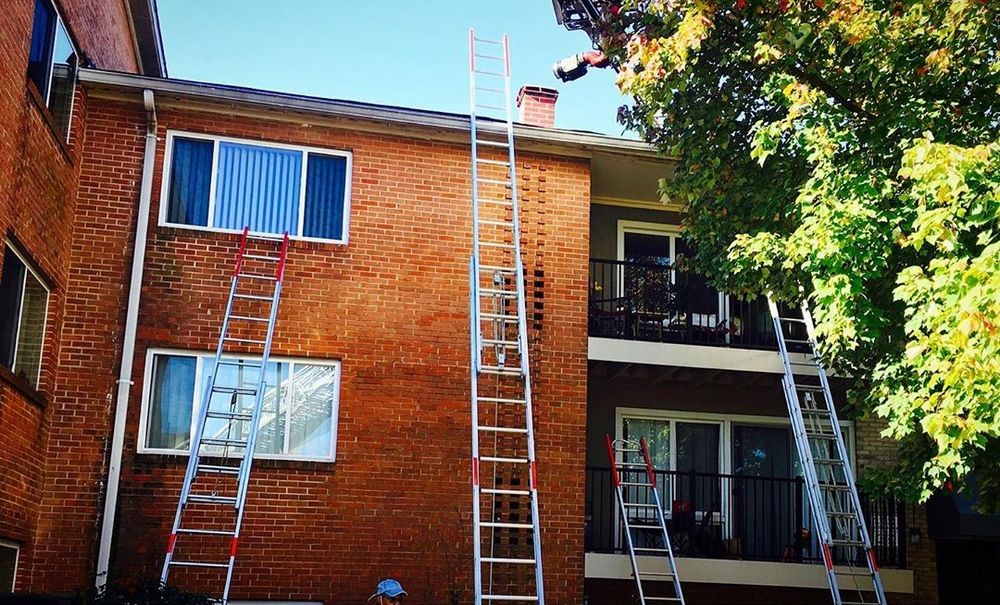If you are a DIY type person, you must own a ladder.
You need a ladder for so many maintenance activities, from replacing a light bulb to cleaning the gutters.
It is much better to have a ladder at home than borrowing from a neighbor or an acquaintance. Borrowing a ladder is not practical. And it’s annoying.
Some people even use a chair or other type of furniture as an improvised ladder.
This is not only impractical but also dangerous. Hence, for whatever type of repair or maintenance at home, buying a ladder is the best option.

Nevertheless, buying a ladder is not as simple as it seems.
You have to choose the right ladder to have a functional tool to assist you. You don’t want a ladder that is too short and won’t let you reach high places.
You don’t want a ladder that will not hold your weight either. You need a ladder that is built for the purpose you intend to use it.
Hence, before anything else, you must get acquainted with the different types of ladders that you’ll find on the market.
This way, you’ll be able to pick the right one for you. Let’s briefly review the most common designs:
These are simple ladders for indoor use. They are short and can stand on their own.
They must rest on a flat and non-slip surface. These ladders are ideal for tasks where high elevation is not needed.
For example, changing a light bulb or reaching a top-shelf. These ladders can be folded for easy transportation and storage.
They usually don’t measure more than four feet;
This type of ladder provides higher elevation, from four to twenty feet.
Like the previous design, their height cannot be adjusted. They stand on their own, too, provided they are placed on a flat and non-slip surface.
These ladders are perfect for many household activities, both indoor and outdoor.
You can use one such ladder to clean gutters, fix the ceiling, seal windows, etc. Because of their height, they work best for one-story houses.
They are collapsible for easier transportation and storage;
These ladders are typically fourteen feet long, but they can be extended thanks to some telescoping sections. Some of these ladders can have an extended length of up to seventy-two feet.
They cannot stand on their own but need a structure to prop up against. Extension ladders must be ideally rested at an angle of 75.5° to be stable.
Because of the elevation they provide, you can use them to paint walls, clean gutters of a two-story house, etc. Make sure to wear non-slip shoes to climb this type of ladder;
These ladders are articulated and can adopt different configurations.
Hence, they can serve as A-frame ladders, scaffolds, etc. These ladders can be as high as thirty feet, and they may or may not stand on their own, depending on the configuration.
With this information, you’ll be able to choose the right ladder for the type of work you intend to do at home.
There is always a risk when using a ladder.
Falls are the most common sources of injury when performing maintenance or repairs using a ladder. Hence, you must learn how to use your ladder properly and responsibly.
Be careful when you climb a ladder, especially if you are not very young.
The consequences of ladder falls are more severe in older people. Thus, take into account the following tips that can help you reduce the risks involved with the use of a ladder.
Now you know the different types of ladders. They are made of a great variety of materials.
Hence, ladders of the same design may have different weight ratings. Choose the proper ladder for the task you want to perform.
Make sure the ladder can hold your weight, including the tools that you’ll be carrying. Also, make sure the height of the ladder you choose is enough to reach the area where you’ll be working.
Improvising extensions to a ladder is very risky, and you should never do it.
Don’t assume your ladder is in good condition and climb it without any previous inspection.
Place the ladder where you intend to use it, but before climbing, inspect it thoroughly. Check that the lock bars are secured properly and that the ladder is firm and stable.
If you see any damage, don’t use the ladder. It isn’t worthwhile taking chances. If the ladder breaks while you’re climbing, the consequences can be very serious.
Don’t climb a ladder before you are completely sure it’s stable. Check whether all the ladder’s feet are firmly resting on the ground.
In the case of an extension ladder, make sure the structure it props up against is firm. For extra safety, get a spotter. Also, if people or vehicles are passing by, make sure they won’t knock the ladder accidentally.
You can place barriers and proper signaling around the ladder while you are on it.
Some people stretch and overreach to the side of a ladder in an attempt to reach farther areas.
This is very risky. You should always maintain 3-points of contact. For instance, you can have both legs and an arm on the ladder while you work. Or two arms and one leg. A different configuration will put you in danger of falling.
Keep yourself within the rails of the ladder. This will give you much more stability and balance.
Never carry tools or other things on your hands while climbing a ladder.
This will contribute to shifting your center of gravity away from the ladder. Use a tool belt if you need to carry anything with you.
If you follow these simple tips, you will be much safer when climbing and working on a ladder.
Remember, the danger of falling from a ladder is real. And the consequences can be serious.